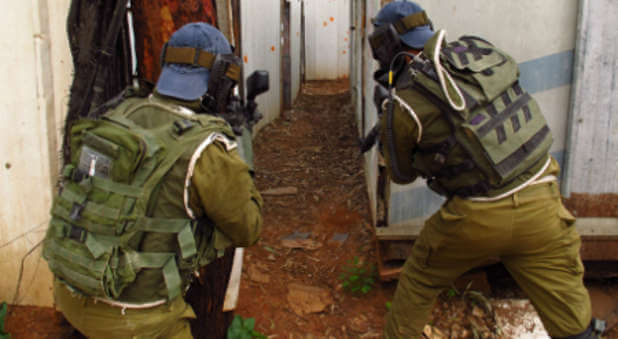On a gray and windy day, the Givati Brigade’s best commanders set out for a colorful round of urban warfare training, each one equipped with the necessary equipment: a combat vest, helmet, kneepads—and a black rifle loaded with paintballs.
“The goal is to take the best commanders in the brigade, to improve their performance and create the next generation of company commanders,” said Maj. Yehuda Lev, a commander within the Givati Brigade’s commando course.
The commando course is a tradition in the Givati Brigade, and every year the finest officers participate in the challenging course.
“It is based on three axes that can intersect at any moment: the professional axis, the axis of leadership, and the axis of educational values,” Maj. Lev said. “Beyond the intersection of these axes, the more important intersection is that of the officers. They arrive from the battalions, the commando unit, and the Rimon special forces unit, and meet each other for the first time and share the individual knowledge that distinguishes them.”
One trainee viewed the course as invaluable preparation for leadership.
“It is a time for personal development. As a commander, I deal with a team here and acquire leadership in battle and concentrate on myself,” said Lt. A, from the commando battalion, which participated in the course. “Everyone arrives from a different place, and everyone has his expertise and then learns from a lot of other people.”
Shaked Battalion’s Lt. Matan Ben Gigi agreed.
“I came here because the course is challenging. I want to continue along the chain of command and here they give me more tools to do so,” he said. “I was exposed to things that improved my abilities as a fighter and as a commander, and everyone here gives their all. So everything is run with a good nature and with maturity.”
Maj. Lev explained that participation in the commando course is a badge of honor for these officers.
“These are great officers, very motivated, who wanted and chose to be in the course. Our emphasis is not on quantity, but on quality,” he said.
At the end of the combat scenario, Lt. A tried to describe fighting in an urban setting with a paintball gun.
“Paintball is the best analogy for fighting in an urban area. When you’re injured, you feel your hand hurt and it is realistic,” he said. “The requirements here are very high and the course is challenging. If it was not challenging, it wouldn’t be fun.”














































